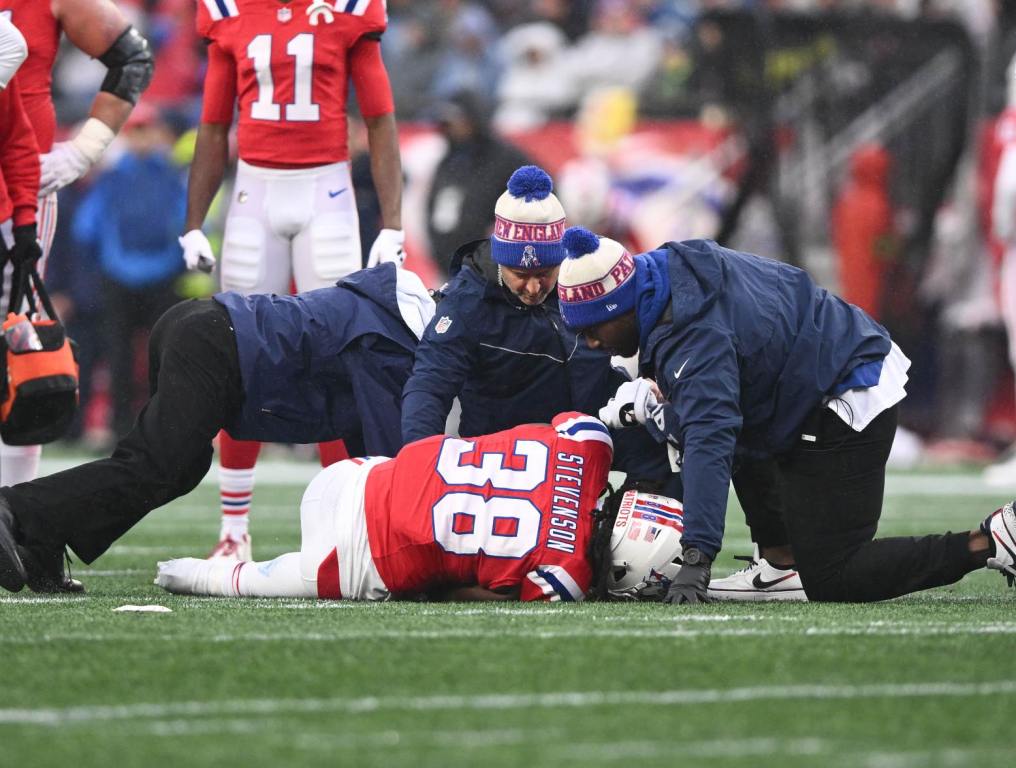Rhamondre Stevenson’s hot start to Sunday’s New England Patriots game against the Los Angeles Chargers was cut short early. After rushing for 40 yards on eight carries in the first 10 minutes of the game, Stevenson had to be helped off the field after being tackled by Chargers rookie defensive lineman Tuli Tuipulotu. He was later ruled out with an ankle injury.
Following the game, Jeff Howe of The Athletic reported that Stevenson’s initial X-rays were negative, and that “the belief is the MRI [Stevenson will undergo on Monday] will show a sprain.” He added that “the initial belief is Stevenson will miss time, possibly multiple games.”
READ MORE:
—Just how one-sided have the Patriots’ recent losses been?
—Ups & Downs from the loss to the Chargers
—Why the Patriots’ quarterback change came this week
Stevenson got hurt on a play featuring a ‘hip-drop tackle,’ a move that has seen increased attention across the NFL this year because of the number of injuries that have resulted from it. On a hip-drop tackle, the tackler wraps up the ball-carrier around the waist and then basically drops his own weight, pulling the tackler to the ground. This often results in ball-carriers legs’ getting twisted on the way down, and/or getting directly rolled up on by the tackler.
According to The Athletic, the NFL “is gathering information on ‘hip-drop’ tackles to decide if they should join the list of banned actions,” which is something many have called for. Initial data has shown hip-drop tackles “have 25 times more likelihood of injury a player as other tackles.”
As part of that process, the league is working to strictly define the act, and has focused on three concepts – “the tackler unweighing his legs or dropping his weight,” “a pivot or swivel by the tackler, which they believe to be a second act by the tackler,” and “landing on the ball carrier’s legs.”





